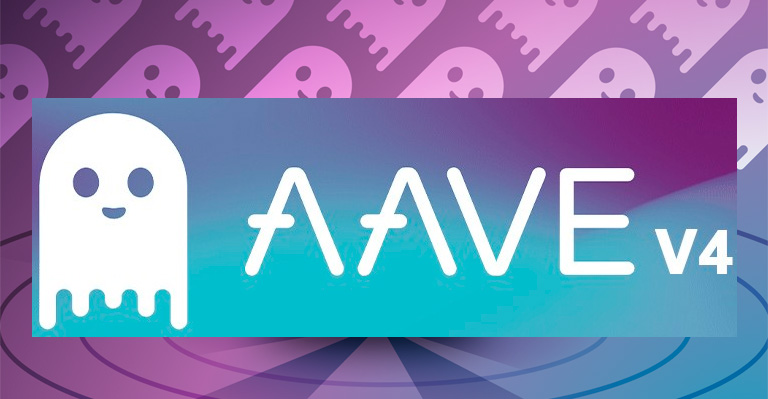TL;DR
- Aave v4 Development Grant: Aave’s governance has approved a $12 million grant for Aave Labs to develop Aave v4, a new version of the DeFi lending protocol. The grant will be distributed over 12 months, with an initial 3 million GHO provided upfront.
- Roadmap and Features: Aave v4 is set to introduce a modular architecture, Chainlink-powered interest rate adjustments, risk-based interest rate premiums, and an updated liquidation engine.
- GHO Enhancements and Branding: The development includes improvements to GHO minting, interest payments, and a soft liquidation mechanism. Additionally, Aave Labs will create new visual identity assets for Aave.
Aave, the prominent decentralized finance (DeFi) lending protocol, is set to receive a significant boost with the approval of a $12 million grant. The Aave governance recently greenlit this grant for Aave Labs, the development arm behind the protocol, to build out Aave v4 over the next 12 months.
The Aave Improvement Proposal (AIP) outlines the allocation of 12 million GHO (Aave’s native stablecoin) to Aave Labs. The funds will support the development of Aave v4, as well as the creation of new visual identity assets for the project.
Aave Labs will receive an initial 3 million GHO upfront, with the remaining funds distributed throughout the year. The proposal emphasizes a one-year technical contributor engagement, positioning Aave Labs as a service provider for Aave v4 development and visual branding enhancements.
Aave’s Current Standing
As of now, Aave ranks as the third-largest DeFi protocol, boasting a total value locked (TVL) of $12.7 billion, according to DeFi Llama. Additionally, AAVE’s price has surged by 4.57% over the past 24 hours, as reported by crypto price feeds.
Roadmap and Ambitions
Avara, the parent company overseeing Aave, GHO, and the Lens social graph, unveiled plans to build Aave v4 in May. The rollout of Aave v4 will occur in stages over multiple years, with the revamped codebase expected to deploy around mid-2025.
After the release of v4, Avara plans to unveil Aave Network, a custom Layer 2 solution. Aave v4 will boast the cross-chain liquidity layer (CCLL) as a key feature, aggregating liquidity from different chains. However, the CCLL is not expected to be operational until 2026 or 2027.

The grant for Aave Labs outlines several core components for Aave v4 development:
- Modular Architecture: Aave v4 will feature a modular architecture to enhance integration efficiency.
- Chainlink-Powered Interest Rate Adjustments: Automatic interest rate adjustments will be powered by Chainlink.
- Risk-Based Interest Rate Premiums: Assets with higher risk profiles will receive interest rate premiums.
- Updated Liquidation Engine: Aave’s liquidation mechanism will undergo improvements.
GHO and Soft Liquidations
The roadmap also incorporates enhancements for GHO:
- GHO Interest Payments: Asset suppliers will receive interest payments in GHO.
- Efficient GHO Minting: Enhancements to the GHO minting process.
- Soft Liquidation Mechanism: Inspired by Curve’s LLAMA liquidation mechanism, Aave’s soft liquidations will convert collateral into GHO during market downturns. When asset values rise, funds will revert to the original collateral, with users experiencing slippage-related losses.
Visual Branding
Aave Labs will develop new visual branding elements, including logos, color schemes, typography, and illustrations, to enhance Aave’s overall identity. The grant proposal also mandates monthly progress reports from Aave Labs to the Aave DAO, ensuring transparency and accountability throughout the development process.

